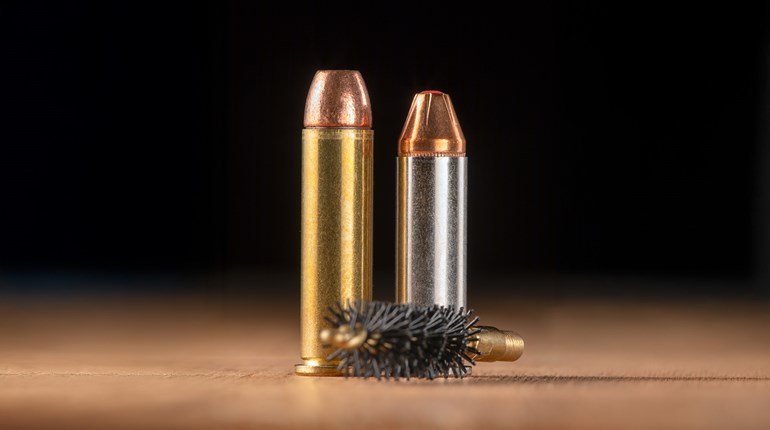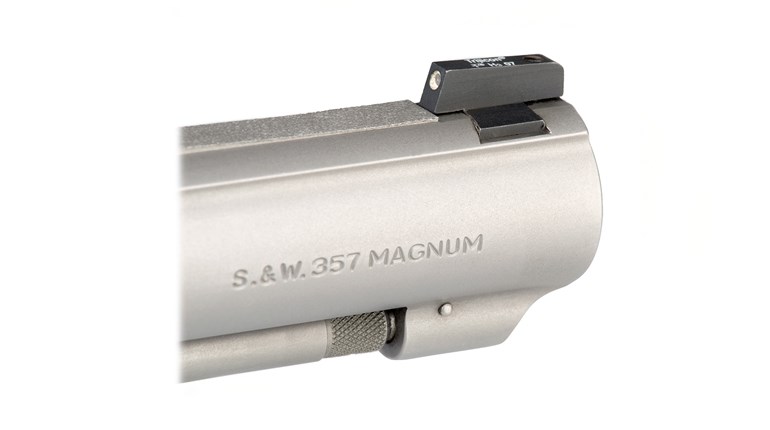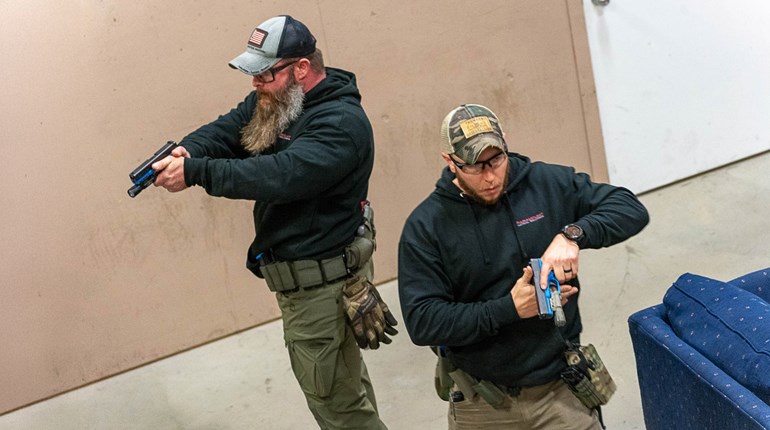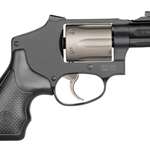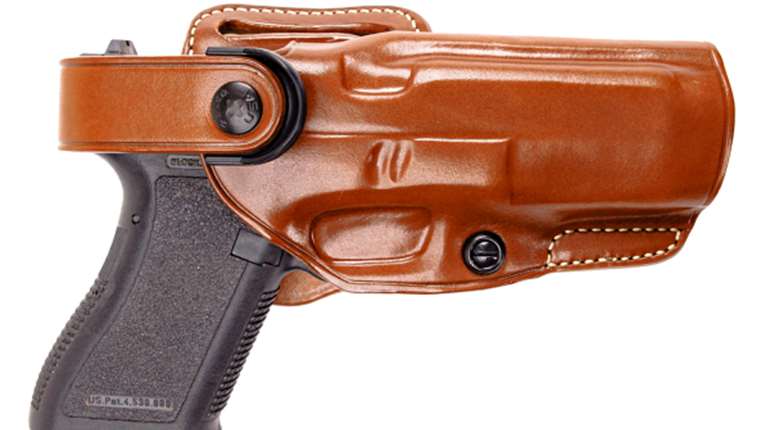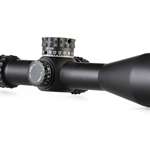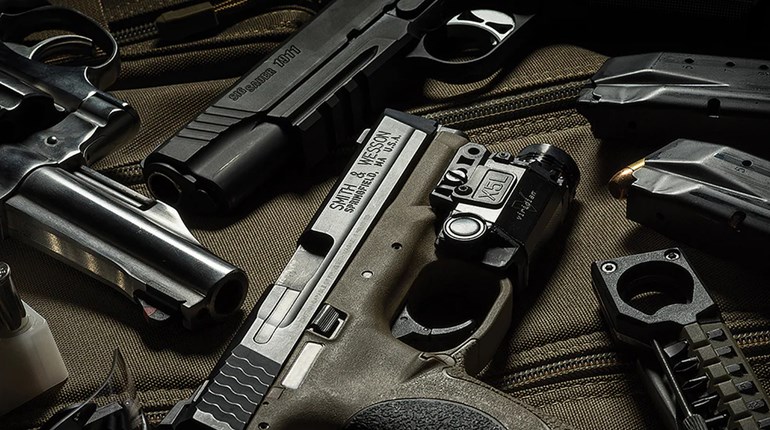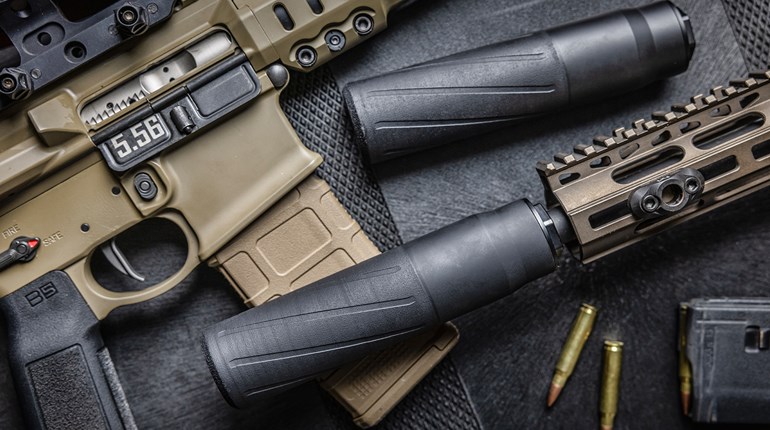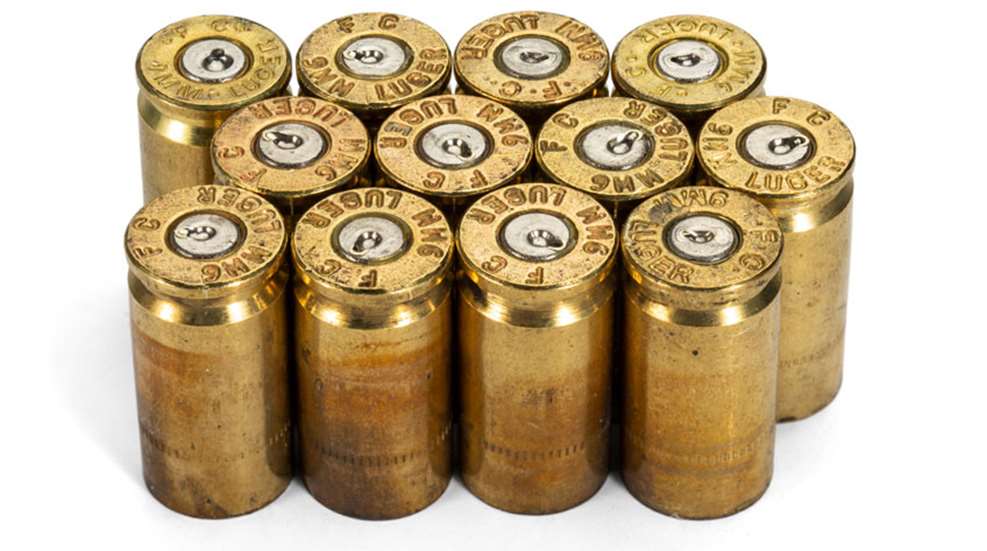
Odd-looking primer strikes such as those above don’t necessarily suggest a problem with a particular gun or its ammo. They could merely be an element of a particular firearm’s design, but they might require further attention.
I have several brands and sizes of 1911 pistols as well as a SIG Sauer P220 and P245, all chambered in .45 ACP. I only shoot factory ammunition in these pistols—mainly 230-grain hardball. Recently, I got a deal on a case of 185-grain +P ammo, which I test fired in all the aforementioned guns. One of the guys I give the spent brass to noted that the primers from some of the pistols had a teardrop-shaped indent on the primer and others had a hemispherical indentation. His suggestion was the ammunition was too hot for some of the guns and as a result they were unlocking early, which was causing the irregular primer strike. Later, I shot some of my regular 230-grain ball loads and noticed the same phenomenon. Some pistols had straight-on hits and some—such as both SIGs—had the drag marks on the primer.
What causes this? Why is this prevalent in some guns and not in others? Could this be dangerous in the long run? I’m anxious to know.
George Goff, Via the internet
There are several possible reasons for the different primer strikes you describe. These are more apparent with cartridges using large pistol primers because of the greater surface area, but are not uncommon in cartridges with small pistol primers. The reasons are similar.
Regarding the SIG Sauer P220 and P245, this feature was intentionally engineered into the pistol from the beginning. The concept was to have the inertial firing pin made heavy enough to remain at or slightly forward of the firing-pin opening in the breechblock through the processes of firing, unlocking and extracting the cartridge. This was done to prevent dirt and other firing residue from collecting in the firing-pin channel over an extended shooting period. By doing this, it was thought to improve durability and reliability over competing brands.
Most 1911s chambered in .45 ACP typically have in-line, hemispherical primer strikes. Although, it isn’t unusual to see firing-pin drag, particularly in older guns firing high-performance ammo.
Pistols manufactured using the original 1911 design with purely inertial firing pins have fairly heavy firing pins compared to later designs manufactured with lightweight material. The heavier the firing pin, the more likely it is to remain forward of the breechface for that extra instant to create the irregular mark (due to the effects of inertia) particularly with higher-pressure ammunition.
Firing-pin springs weaken over time, leaving less effort to overcome for retraction when the firing pin is forward, striking the primer. Therefore, the firing pin stays forward for a longer period of time in the firing and unlocking steps of the cycle of operation.
Recoil springs also weaken over time, providing less resistance to the rearward movement of the slide when the cartridge is fired. This equates to increased slide speed, which unlocks the barrel from the slide earlier, thereby creating the drag mark on the primer while the firing pin is still protruding from the breechface.
Compact 1911s tend to leave firing-pin drag marks on primers. The mass of the slide and barrel is less than the full-size pistols, which means less resistance to the impulse of the fired cartridge and generally a faster-cycling slide and barrel in unlocking.
In studying primer strikes from different pistols, you will see drag marks on the primers more often than you might think. Many of the new striker-fired pistols (particularly compact and subcompact models) leave irregular indentations on primers as normal operation.
In your examples, there are a few factors to consider. First is the condition of the gun. If the recoil and firing-pin springs are new or in good shape, it is unlikely the gun is unlocking before the bullet has exited the barrel. Also, consider what type of ammunition for which the pistol is rated. High-pressure ammo (such as +P) can affect the cycle rate of the gun and give different appearances on the fired primer.
As long as the guns in your collection are mechanically sound and you are using quality, factory ammunition, I don’t think you have a safety concern resulting from the appearance of your fired primers.












